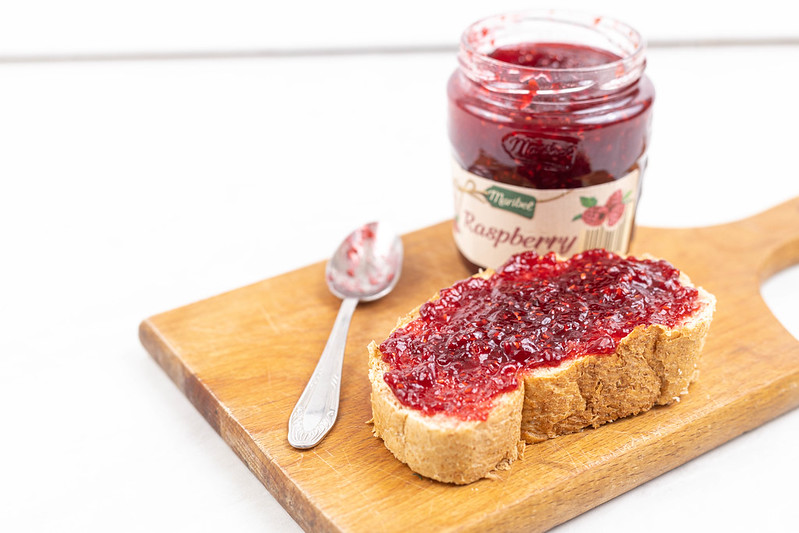The key difference between jelly and jam is their appearance and texture. Jam contains chopped pieces of fruit and has a spreadable consistency, while jelly has a smooth, gelatinous texture without any fruit pieces. Jelly can maintain its rigid shape even after it is sliced, while jam can be easily spread due to its soft and smooth consistency.
Jam and jelly are two common fruit products that are often used interchangeably in American culture. We can use them as side dishes or sandwich fillings or in pies, cakes, and other dishes. Both jam and jelly are made from fruit essence, which can either be actual pieces of fruit or just the flavor. While both are made from fruit, there is a significant difference between jelly and jam in terms of their texture, appearance, and production.
Key Takeaways
- Jam is made from chopped pieces of fruit and has a spreadable consistency, while jelly is made from fruit juice and has a smooth, gelatinous texture without any fruit pieces.
- Jam has a slightly chunky texture with visible pieces of fruit, while jelly has a firmer texture and is more transparent in appearance.
- Jelly can maintain its rigid shape even after being sliced, whereas jam can be easily spread due to its soft and smooth consistency.
What is Jam?
Jam is a fruit spread with a soft and smooth consistency. To make jam, fruit is crushed or chopped and then cooked with sugar (and sometimes pectin and an acid) until the fruit pieces soften and lose their shape. The mixture thickens to a spreadable consistency as water evaporates during the cooking process. Sugar serves as the main preservative for the jam. Jam typically has a slightly chunky texture, with visible pieces of fruit. Jam may also contain seeds, skin, or pulp from the fruit, giving it a more rustic appearance. While jam maintains its shape, it is not as firm as jelly.
Jams are available in various flavors globally, with orange, mango, mixed fruit, and strawberry being among the most popular ones.
What is Jelly?
Jelly is a fruit product made from fruit juice that has been cooked with sugar and pectin. Most people use lemon juice as an acid to balance the consistency and texture of the mixture when making jelly. The mixture is then strained to remove any solid pieces, resulting in a clear, smooth spread. Jelly typically has a firmer texture than jam, and it is often more transparent in appearance. Moreover, due to its firm texture, it holds its shape when cut into pieces, making it excellent as a single side dish or as an addition to cakes and pies.
Typically, jellies do not contain any pieces of fruit. Grape, apple, red currant, blackberry, and blueberry are some popular types of jellies.
What is the Difference Between Jelly and Jam?
Jam is made from chopped pieces of fruit, while jelly is made from fruit juice only. Jelly also has pectin and lemon juice, which gives it a firm shape as opposed to the fluid-like characteristic of jam. In fact, jelly will also appear clearer because it is made only from fruit juice, while jam will have noticeable fruit bits, giving it its thicker density. Moreover, jam is often used alongside another dish, while jelly can be eaten by itself.
Summary – Jelly vs Jam
Jam has chopped pieces of fruit and can be easily spread due to its fine texture, while jelly has a translucent appearance without any fruit pieces and can maintain its rigid shape even after you slice it. This is the key difference between jelly and jam. You should not be having any more trouble telling them apart the next time you visit the grocery. Just remember that jams are often packed in jars, while jelly will usually be packed in a plastic container and stored somewhere fresh.
